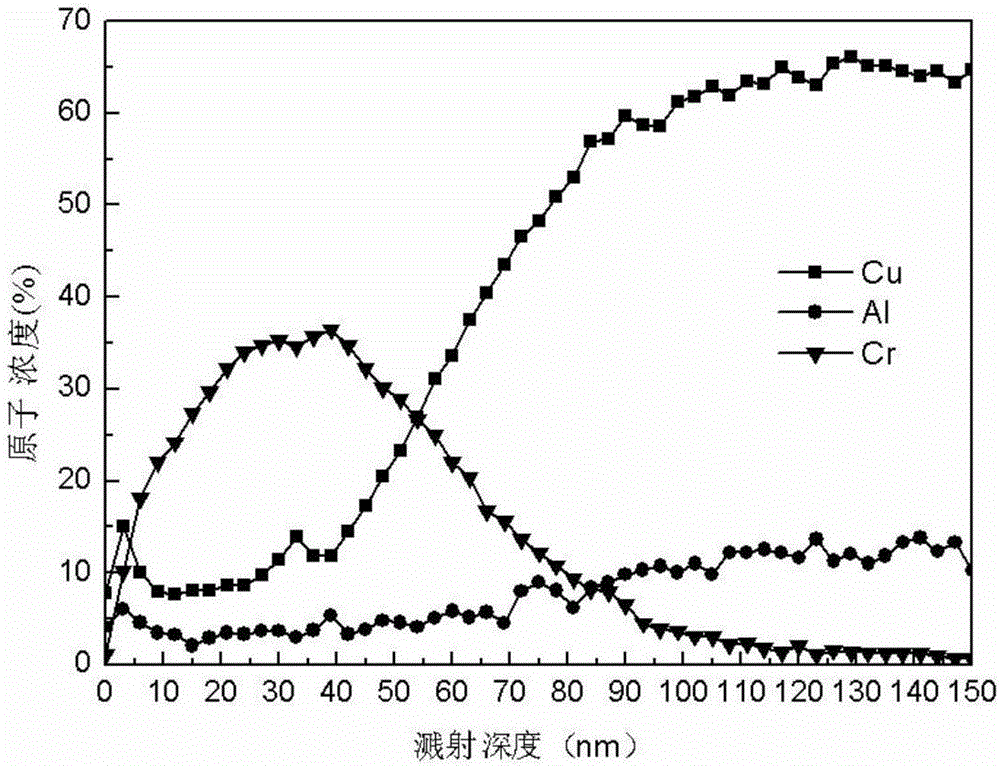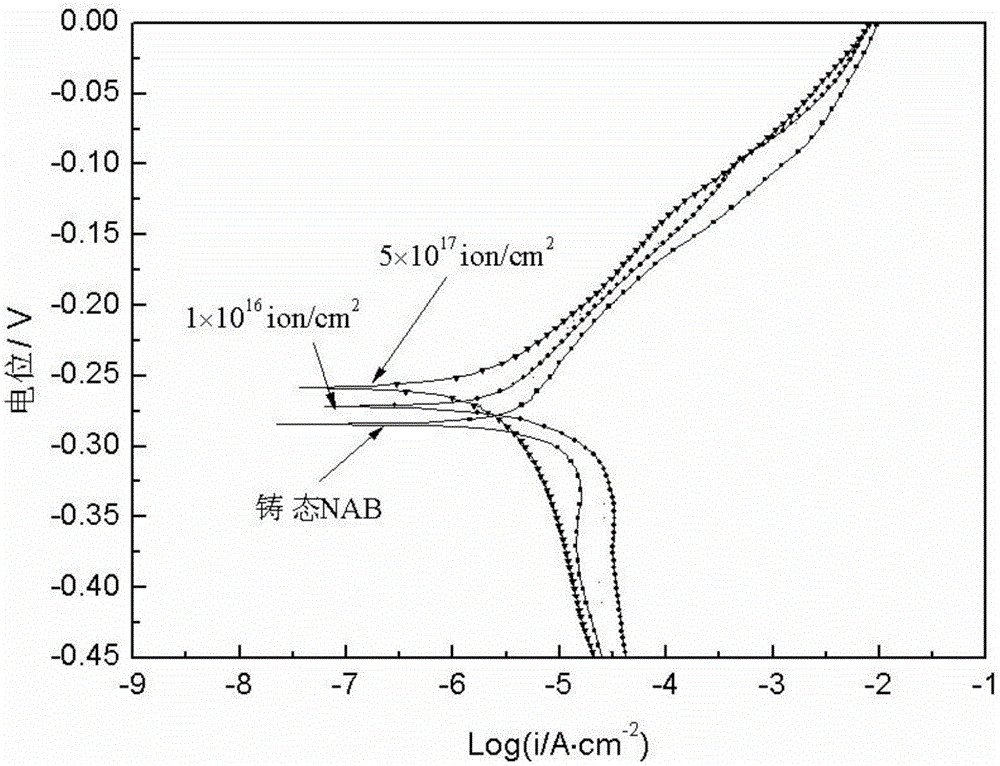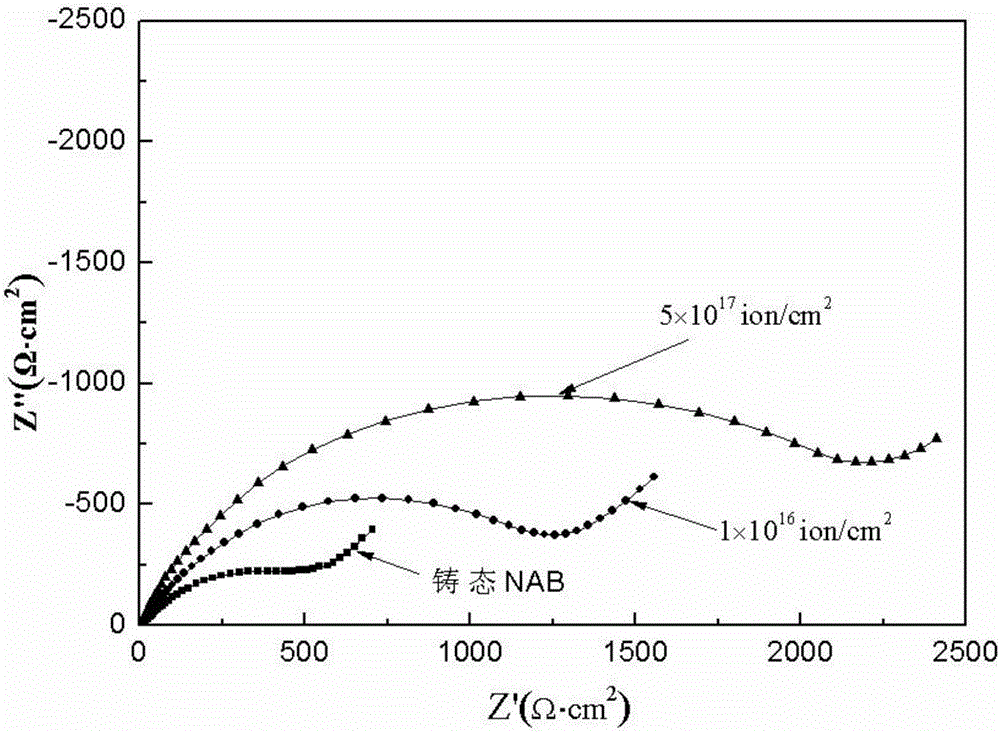Method capable of improving corrosion resistance of nickel-aluminium bronze
A nickel-aluminum bronze, corrosion-resistant technology, applied in ion implantation plating, coating, metal material coating process, etc., to achieve the effect of improving corrosion resistance, inhibiting phase-selective corrosion, and having obvious modification effects
- Summary
- Abstract
- Description
- Claims
- Application Information
AI Technical Summary
Problems solved by technology
Method used
Image
Examples
Embodiment 1
[0026] This example relates to a method for ion implantation to improve the corrosion resistance of nickel-aluminum bronze, said method comprising the steps of:
[0027] Step 1: Mechanically polish the surface of the as-cast nickel-aluminum bronze with 400#—800#—1200#—2000# water sandpaper in sequence, and then polish it to a mirror surface with 0.5 μm diamond abrasive paste. Put the sample in the alcohol solution for ultrasonication for 15 minutes, then rinse it with deionized water, and dry it with cold air for later use;
[0028] Step 2: Place the treated nickel-aluminum bronze sample in the vacuum chamber of the ion implanter, implant Cr ions into the surface of the sample with a voltage of 40kV and a beam current of 1mA, and the implantation dose is 1×10 16 ion / cm 2 .
Embodiment 2
[0030] This example relates to a method for ion implantation to improve the corrosion resistance of nickel-aluminum bronze, said method comprising the steps of:
[0031] Step 1: Mechanically polish the surface of the as-cast nickel-aluminum bronze with 400#—800#—1200#—2000# water sandpaper in sequence, and then polish it to a mirror surface with 0.5 μm diamond abrasive paste. Put the sample in the alcohol solution for ultrasonication for 15 minutes, then rinse it with deionized water, and dry it with cold air for later use;
[0032] Step 2: Place the treated nickel-aluminum bronze sample in the vacuum chamber of the ion implanter, implant Cr ions into the surface of the sample with a voltage of 30kV and a beam current of 2mA, and the implantation dose is 5×10 17 ion / cm 2 .
[0033] Example 2 provides test data on the distribution of elements inside the surface-modified corrosion-resistant layer. Using Auger electron spectroscopy to analyze the depth of the corrosion resista...
PUM
 Login to View More
Login to View More Abstract
Description
Claims
Application Information
 Login to View More
Login to View More - R&D Engineer
- R&D Manager
- IP Professional
- Industry Leading Data Capabilities
- Powerful AI technology
- Patent DNA Extraction
Browse by: Latest US Patents, China's latest patents, Technical Efficacy Thesaurus, Application Domain, Technology Topic, Popular Technical Reports.
© 2024 PatSnap. All rights reserved.Legal|Privacy policy|Modern Slavery Act Transparency Statement|Sitemap|About US| Contact US: help@patsnap.com










